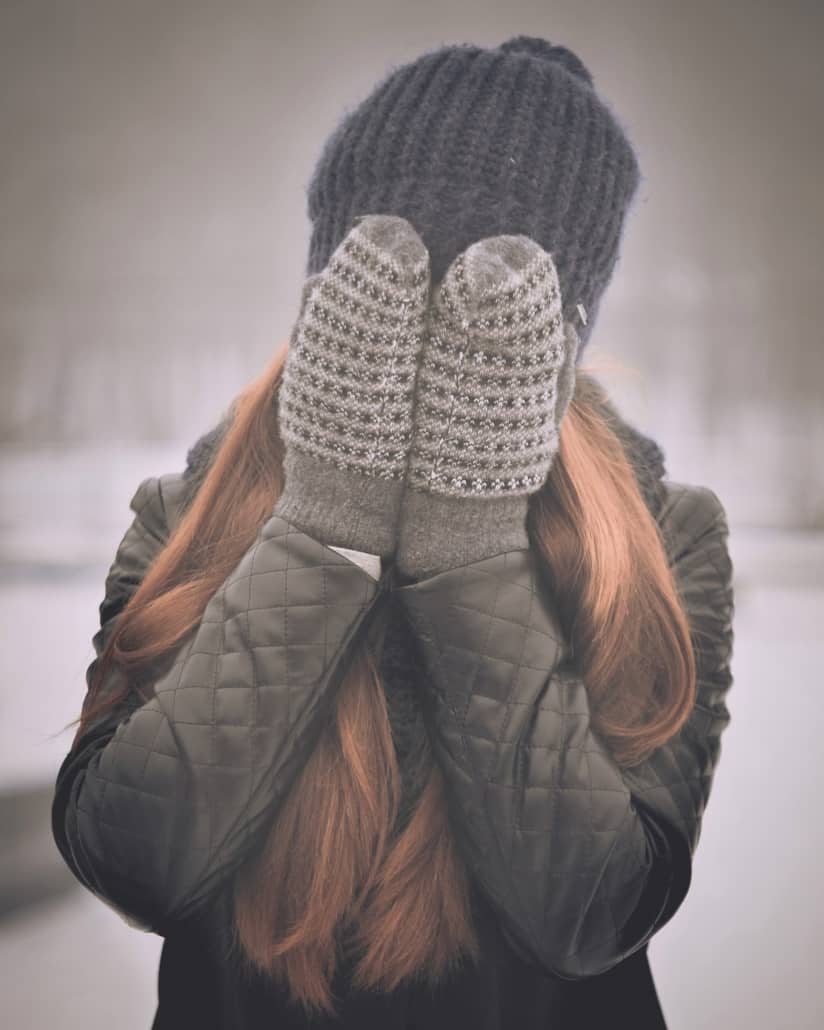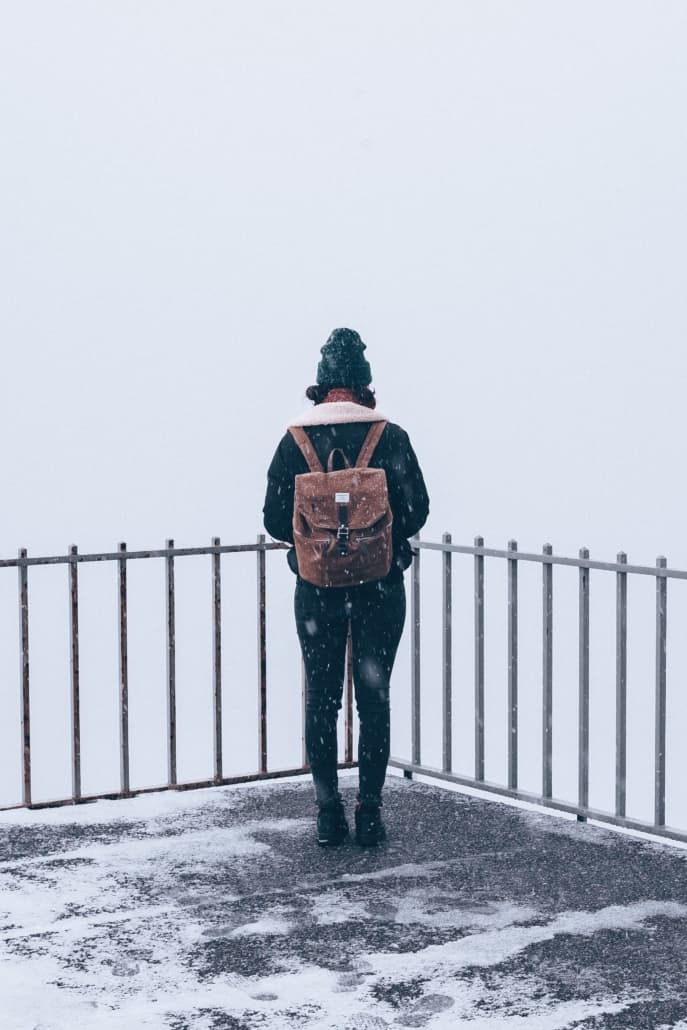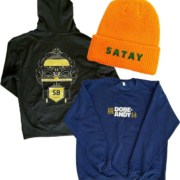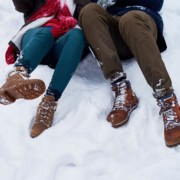How to dress for winter in Canada
New to Montreal? New to Canada? Here’s How to Dress for Winter!
Whether you’ve recently arrived from a country without a yearly deep freeze, or you’re from one of those Canadian oases that stays mild (by Canadian standards), your first winter in Montreal can be a little… startling.
The ice, the snow, the WIND! Oh, the wind! With wind gusts taking us down to -30℃ (-22 ℉) and below on the reg, just how do Canadians survive winter?
It’s all about the layers! But you need to get strategic and plan for where you’re going and what you’ll be doing.
You also need to put aside any hangups about looking a bit ridiculous. Trust us, you’ll be warm and you won’t care.
Now, if your commute and lifestyle are such that your only outdoor time is getting from door to car and back again, you don’t need to worry as much about blocking out the cold. But, if you have to (or want to) spend more than 15 minutes at a time outside, dressing warmly and smartly is a must. So without further ado…
Here is what Montreal Tips thinks you should wear in Canada in winter:
The Coat
Let’s start with the most basic of Canadian winter essentials – the winter coat.
What type of Coat should you get for a Canadian winter?
You have 2 options, the super warm or the moderately warm. Check below for details on each.
Super Warm
If you want something that will keep you warm, even over a simple t-shirt, your best bet is one of the higher end brands. These are brands like Canada Goose, North Face, Arc’teryx, Nobis and Patagonia. They are typically very pricey, but they will do the job and they’re built to last. Many are made with goose down, or another down blend, but there are synthetic animal friendly materials as well.
Many of these coats can run you well over $400 and high price tag isn’t the only downside. If you’re walking around a mall or museum or anywhere heated with one of these on, you’ll quickly end up dripping in sweat. On the other hand, they are oh so very warm and cozy.
Moderately Warm
Of course, there are plenty of winter coat brands that are moderately warm and can be found at stores like l’Équipeur, Winners, The Bay and even places like Walmart and Old Navy.
These coats are usually warm enough up to about -20℃ (with no windchill), but beyond that, you’ll be feeling the cold. That’s where layering comes in. If you opt for a moderately warm coat, ensure the fit allows for a heavy sweater underneath, then look for something in a chunky knit – ideally a wool blend, but synthetic works too. Chunky knits work really well at providing an insulating layer and keeping you toasty. Opt for a cardigan style that does up and you can even use safety pins to attach it to the inside of your coat, making it easier to put it on and take it off as one piece.
Fleece layers can be great as well, but they aren’t as breathable, so if sweatiness is a concern for you, avoid fleece.
See a list of the best jackets to wear in a Canadian winter.
The Boots
What type of Boots should you get for a Canadian winter?
You WILL need good boots. Boots to keep you warm, to give you traction on snow and ice, and to keep your feet dry, especially when slush happens (and it happens a lot).
All that to say, you want to look at three key things when choosing winter boots: temperature rating, treads and waterproof level.
As with many things, the best performing brands also tend to be the most expensive. When it comes to boots, those brands include Sorel, Bogs, UGG, The North Face, Timberland, Columbia and more.
With many of these brands, you can often find an excellent pair for between $150 and $200, which can be a lot upfront, but with proper care, they should last you several years. Proper care means regularly cleaning them (to get rid of road salt, which can be especially damaging) and using protective sprays.
If these options are out of your price range, the Canadiana line at Walmart is also decent, and you can find good options at stores like Joe Fresh, Globo or Winners.
With lower cost options, prioritize waterproofness. Buy them one size – or half a size – larger and you can layer warm socks or even add in thermal insoles which make a world of difference. For traction, you can buy products like GripOns that turn virtually any boot into prime winter wear.
See the best boots for women in a Canadian Winter.
See the best boots for men for winter in Canada.
The Pants
Remember back at the beginning when we said to let go of looking ridiculous? Even lifelong Montrealers struggle with this one, but when that temperature drops and the windchill kicks up, being afraid of looking silly leads to frozen – sometimes literally – legs. Is it too cold in Canada? Well, when your thighs are burning from cold and then start to itch and ache as they thaw out, it sure does feel that way.
So here’s the thing: give snow pants a try. You won’t be among the majority, but you also won’t be alone.
What pants to wear for winter in Canada?
Depending on where you shop – which can be anywhere from Walmart or Aubainerie, to MEC or even L.L Bean, you can pay anywhere from $25 to $200 and beyond. Higher-end pants do tend to be warmer (and a little better looking), but if you’re using these for commuting, picking the kids up from school, running errands or the occasional skating or winter hiking adventure, you don’t need to go high end. If you plan to do a lot of skiing, skating, snowshoeing or any other outdoor activity, you may want to opt for something higher quality and waterproof.
The Accessories
What kind of accessories should you have for a winter in Canada?
Hat, mitts, neckwarmer… you need all three!
-
Hat
There are a lot of great looking hats out there. And most will be just fine when things aren’t too cold. Even a headband or ear muffs will do the trick. But, when it really gets cold, you’ll want a proper hat – either fleece, or knit with a thermal lining. Pom poms are cool, but they don’t always fit under hoods, so they may limit your coziness factor.
-
Mitts
Mittens are usually warmer than gloves, but with newer materials like gore tex and even tried and true textiles like merino wool, you can get decently warm gloves as well. That said, if budget is an issue, opt for mittens as they will keep you warmer when made with less expensive materials.
-
Neckwarmer
A scarf is definitely an option over a neckwarmer, but for safety’s sake, style it tucked under your coat so there are no loose ends. The safety concern is greater with children, with many schools and daycares outright banning scarves, but the danger doesn’t disappear for adults. Scarves can get caught in bus, metro or even car doors, so make sure those ends are tucked, or opt for a neckwarmer or infinity scarf instead.
Beyond
If you really want to avoid the cold, or if you’re dressing for outdoor sports, a full-coverage balaclava is great for keeping the frost off your nose and cheeks.
Layering
So we’ve got your outerwear covered, but here’s another concern when it comes to dressing for winter in Canada: indoor heating! Or being outside for extended periods! Ugh. So may things to consider.
Layering for indoor heating
If you’re a student or work indoors, odds are your workplace or classroom are heated. Sometimes OVERheated. So you dress warm for outdoors, then sweat half to death throughout the day.
You need to layer. When choosing winter clothing, focus on light fabrics like cotton or thin knits and layer a sweater or cardigan overtop. You can also layer warm socks over tights or thin dress socks for outdoors. Dress for the temperature of where you’re going, then layer on top of that for warmth outdoors.
Layering for outdoor activities
Whether it’s winter sports, long walks, watching your kid’s hockey practice or an outdoor holiday market, there’s no reason to spend the whole winter inside. Instead, layer up and embrace the season!
Thermal long underwear is, hands down, the best way to go. Often called a “base layer”, long underwear is another instance where price range varies immensely. If you’re opting for a lower price range, look for a breathable fabric. Cotton waffle knit is a great option. It will give you the insulation you need to stay warm, but will be breathable enough to keep you from overheating.
Of course, every Canadian (and every Montrealer) has their own favourite tips for staying warm throughout the winter or for how to pack for a winter trip. What’s your top tip? Share it in the comments! You just might save a tourist or new arrival from the dreaded windchill thigh burn.

 Photo by freestocks.org on Unsplash
Photo by freestocks.org on Unsplash







 Photo by Gabrielle Cepella on Unsplash
Photo by Gabrielle Cepella on Unsplash Photo by Brooke Lark on Unsplash
Photo by Brooke Lark on Unsplash Photo by Deanna J on Unsplash
Photo by Deanna J on Unsplash
Trackbacks & Pingbacks
[…] How to dress for winter in Canada […]
Comments are closed.